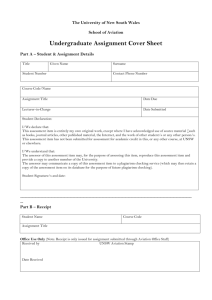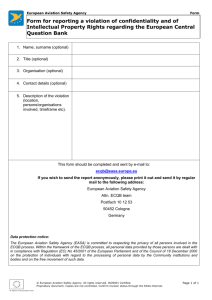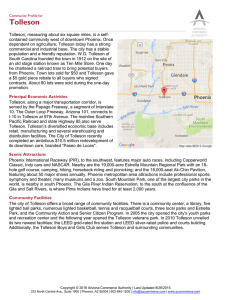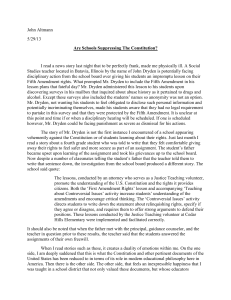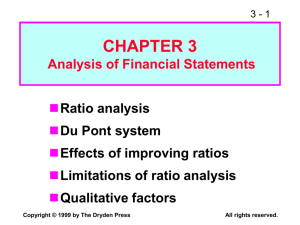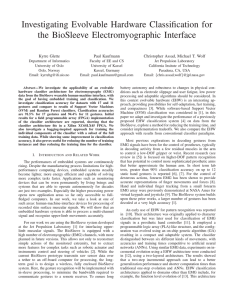Human Factors Training - FAA Approved Aviation Training
advertisement
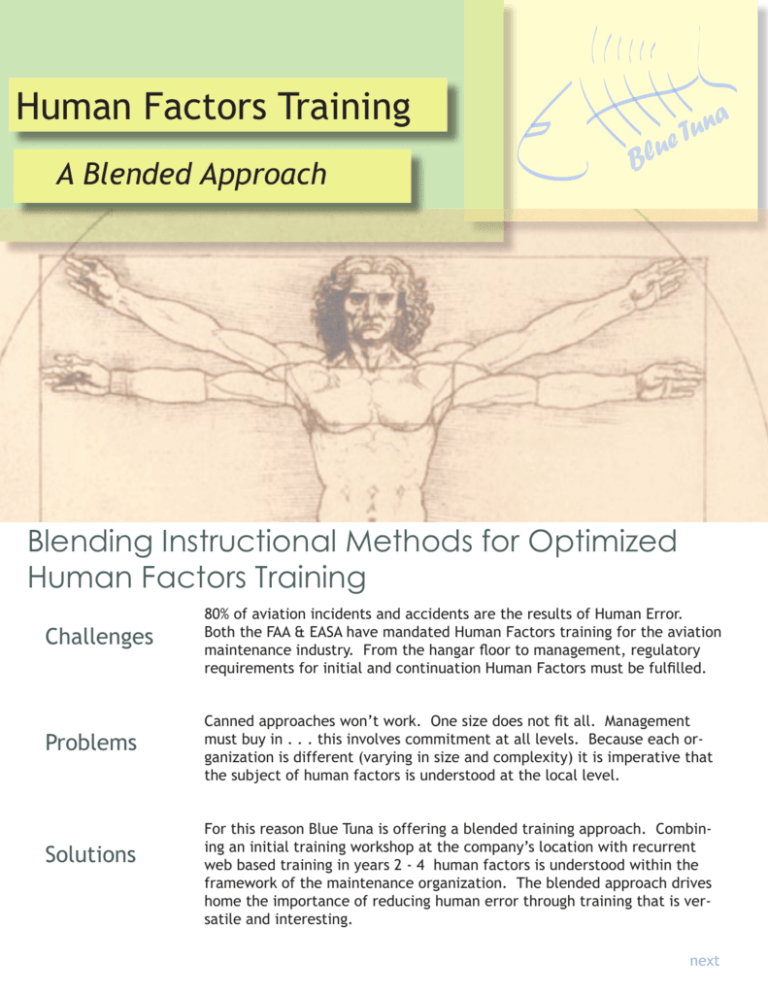
Human Factors Training A Blended Approach Blending Instructional Methods for Optimized Human Factors Training Challenges 80% of aviation incidents and accidents are the results of Human Error. Both the FAA & EASA have mandated Human Factors training for the aviation maintenance industry. From the hangar floor to management, regulatory requirements for initial and continuation Human Factors must be fulfilled. Problems Canned approaches won’t work. One size does not fit all. Management must buy in . . . this involves commitment at all levels. Because each organization is different (varying in size and complexity) it is imperative that the subject of human factors is understood at the local level. Solutions For this reason Blue Tuna is offering a blended training approach. Combining an initial training workshop at the company’s location with recurrent web based training in years 2 - 4 human factors is understood within the framework of the maintenance organization. The blended approach drives home the importance of reducing human error through training that is versatile and interesting. next Advantage with Blue Tuna Dr. Terry Tolleson has spent 25 years speaking to the human condition. With a background in aviation and training Dr. Tolleson is uniquely qualified to guide your organization towards an understanding of the elements of Aviation based Human Factors. The one day workshop includes: An Introduction to Human Factors is built around the case study of the Dryden Accident in Canada. Using this watershed accident as a basis for analysis the following components of maintenance based human factors is presented. This one day workshop has been taught on hangar floors, at conventions, in small auditoriums, large venues etc . . . for managers through mechanics. Schedules are flexible. Break the seminar up into 2 days instead of one . . . Dr. Tolleson’s experience in delivering training will keep your employees engaged in the learning process. * The development of Maintenance Resource Management (MRM) from Crew Resource Management (CRM). * The SHELL Model as a means of explaining the interactive components involved in maintenance functions. * Analysis of the history of accidents, increases in technologies, procedures etc . . . and their subsequent impact on current trends in civil aviation. * Heinrich’s Ratio and the implications for truthfulness in reporting incidents as a means of avoiding major accidents. *Contributing Links in the Chain of Events, underscoring the importance of a systemic approach to Human Factors and the creation of safety nets. *The Reason Model’s explanation of the classification of unsafe acts, and the application of this classification in the Dryden Case Study. *The Navy’s Human Factors Analysis and Classification System (HFACS), with comparison of 1 st, 2 nd, and 3 rd Order(s) Error Categories as they relate to Dryden. *An Overview of the Dirty Dozen of Human Factors. These 12 identifiable factors leading to maintenance errors will be examined in light of the Dryden Case Study. Contact Terry Tolleson Phone: 214-681-4300 doc@bluetunadocs.com www.bluetunadocs.com www.iarenewal.com WEB Based Training Blue Tuna’s On-Line Training offers the best web based training in aviation today. Simple, easy to use, training includes course presentation, validation of the training event and record keeping all in one self contained package. The Web Based Human Factors training reinforces the one day workshop, and also functions as a cost effective approach to recurrent training.




